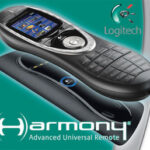If you’ve ever wondered how little machines such as USB flash drives work, this article will take you inside a USB flash drive and show you how such small devices can store large capacities of data.
Today, we have approached a time called the “information age”. Things are getting smaller and smaller with more features, such as USB flash drives. They come in a variety of dimensions; but one thing is for sure – they are usually smaller than your index finger and can store high volumes of data. To an uninformed person this may seem like a miracle, but the explanation is not far from understandable.
This article is suitable if you ask questions such as: How do they work? How do they retain memory? What does each component inside of them ultimately perform?
You can rely on this article to make a basic explanation of how USB flash drives perform the tasks that we depend on.
Of course, when analyzing a piece of hardware, its inside components are the primary thing that must be observed. A USB drive with a see-through case would be helpful in this case. If you do not own a USB flash drive with such a case, you will have to open it to look at the interior. Inside of your USB flash drive, you will notice a small board (most times green, but it could be any color) with a series of components. Usually two chips are the first thing you will notice. If you see these two, they are the two main pieces. The one on the left is the flash memory controller chip, and the one on the right is the microcontroller chip.
The microcontroller chip of the USB flash drive performs a similar task as a PC’s processor, also known as a CPU. Microcontrollers and CPUs perform a very important task in synchronizing Input/Output (I/O) operations, kind of like how your heart works to keep your blood flowing in and out at a pace that is not too fast or too slow for your body at its current state. The memory controller chip is the one that stores data statically, and does not need a battery or anything to maintain the memory inside of it using Floating Gate technology.
Perhaps upon reading the above, you have become a little confused. Well, Floating Gate technology makes the memory controller able to trap electricity (data) and store memory without any extra electricity necessary to be spared for it. Erasing works like this: the voltage is changed which releases the data. These changes in voltage are determined by the computer that you plug your USB flash drive inside of.
As you can see, if you are looking at the inside of your flash drive right now, the tasks are all performed in a very tiny amount of space, perhaps leaving you at amazement in the way that technological advances have made devices so much smaller yet so much more capable than their predecessors.



